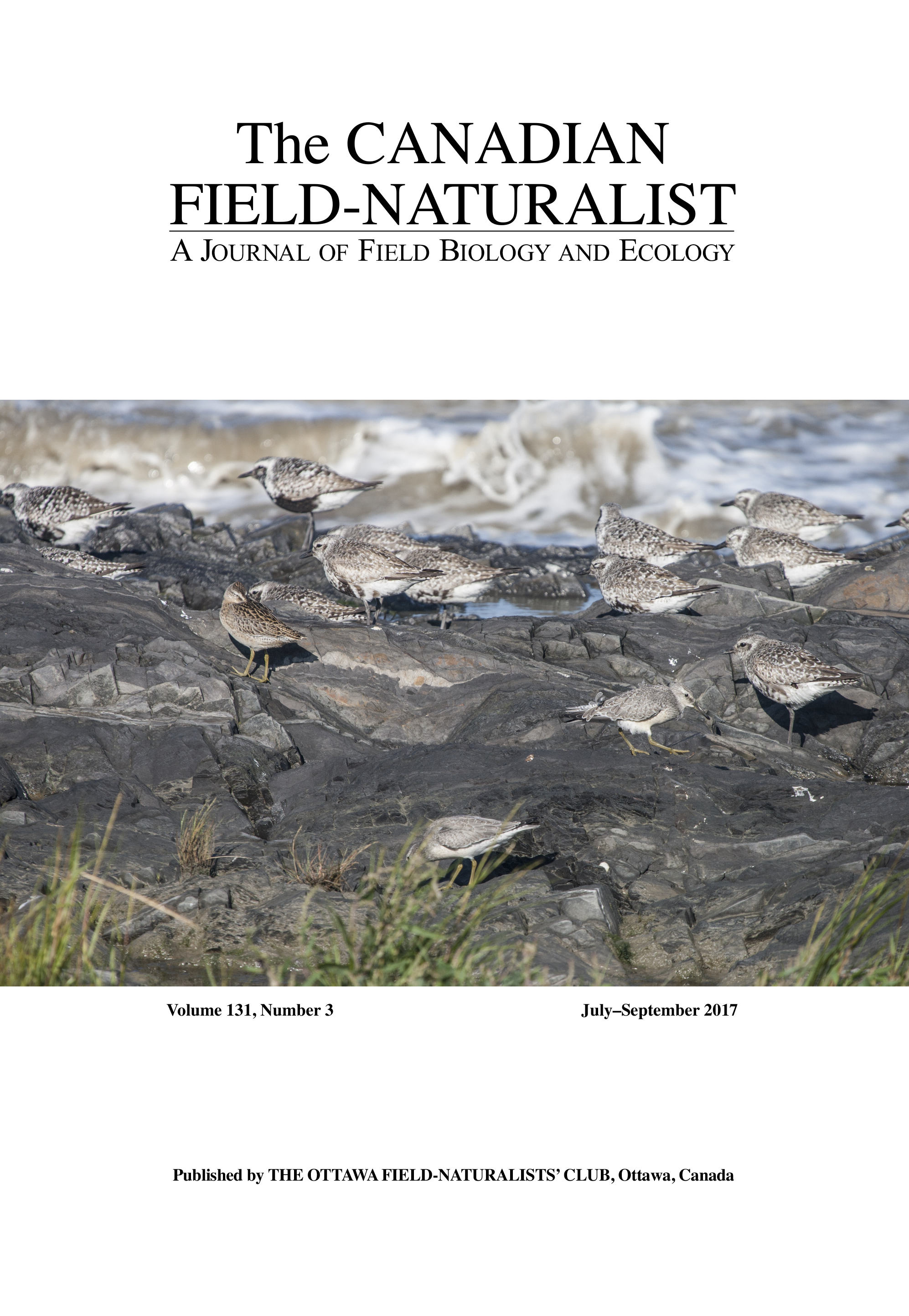Observations of Long-distance Post-release Dispersal by Reintroduced Bison (Bison bison)
DOI:
https://doi.org/10.22621/cfn.v131i3.1825Keywords:
Bison, Bison bison, dispersal, movements, post-release, reintroduction, YukonAbstract
Key objectives of wildlife reintroduction projects should include encouraging post-release site fidelity and high survival rates of founding individuals. Yet, few studies empirically evaluate these performance metrics for released individuals. Bison(Bison bison) restoration is receiving renewed interest by wildlife managers. To inform new bison reintroduction projects, we provide an observation of a 375-km (straight-line distance) post-release movement of three bison bulls from a release site in Yukon, Canada, in 1988. In addition, we note 250-km and 155-km post-release movements of bison in the Northwest Territories, Canada, in 1980 and 1998, respectively. These observations demonstrate the dispersal ability of bison encountering new environments. Wildlife managers planning for new bison reintroductions should consider means to enhance post-release site fidelity to limit long-distance dispersal and mortality and maximize initial population growth.
Downloads
Published
Issue
Section
License
Copyright for Canadian Field-Naturalist content is held by the Ottawa Field-Naturalists' Club, except for content published by employees of federal government departments, in which case the copyright is held by the Crown. In-copyright content available at the Biodiversity Heritage Library is available for re-use under a Creative Commons Attribution-NonCommercial-ShareAlike 4.0 (CC BY-NC-SA 4.0) licence. For usage of content at the BHL for purposes other than those allowed under this licence, contact us.
To request use of copyright material, please contact our editor, Dr. Dwayne Lepitzki: editor -at- canadianfieldnaturalist -dot- ca





